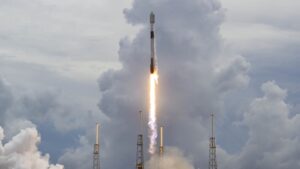Miller said the venture is “actively looking at launches” for next spring, summer and fall as it nears regulatory approval to start commercial services under recently streamlined rules.
The plan to launch multiple satellites in one go in December could change “for tactical reasons,” he added.
Lynk announced May 25 that it requested permission from the Federal Communications Commission to operate an initial set of satellites under smallsat rules established in 2019, enabling services to begin quickly but with limitations that include a constellation of no more than 10 satellites.
“Before the new ‘smallsat rules’ we were thinking we could have dozens of satellites in orbit, but without the authority to provide commercial services,” Miller said.
He added that strong demand from mobile network operators (MNOs) for its services is also encouraging Lynk to target summer 2022 to launch commercially.
The constellation’s initial capacity constraints will limit these services to messaging and emergency alerts. It is also limiting early rollout to 12 MNOs — one per country of operation — under a flagship carrier program.
Lynk said it has over 36 testing partners worldwide, representing more than 1.5 billion mobile phone subscribers.
“The first dozen MNOs will be receiving a defacto ‘exclusive’ in their country for a limited time period,” Miller said in an email.
The company is planning a total constellation of 5,000 satellites in low-Earth-orbit, ramping up to produce 200 of them per month by 2025 to keep the network replenished and upgraded.
“We will build a continuous production line of spacecraft, and every 2 years we will upgrade to the next generation of spacecraft size and performance,” he said.
“Our goal is to upgrade the spacecraft like clockwork, just like how iPhone is upgraded every year.”
Lynk said July 13 that Shannon, its fifth test satellite that launched on a SpaceX ride-share mission in June, had started operations following successful deployment.
Shannon is five times the mass and has seven times the power of its fourth satellite, according to Lynk, and is designed for mass production.
Texas-based AST SpaceMobile, which raised about $462 million when it became a public company in April and was formerly known as AST & Science, is also developing a cellphone-compatible satellite broadband constellation.
The venture is planning its first commercial satellite launches for the second half of 2022 or early 2023, when it expects to cover 49 countries along the equator with 20 satellites, representing a total population of around 1.6 billion people.



